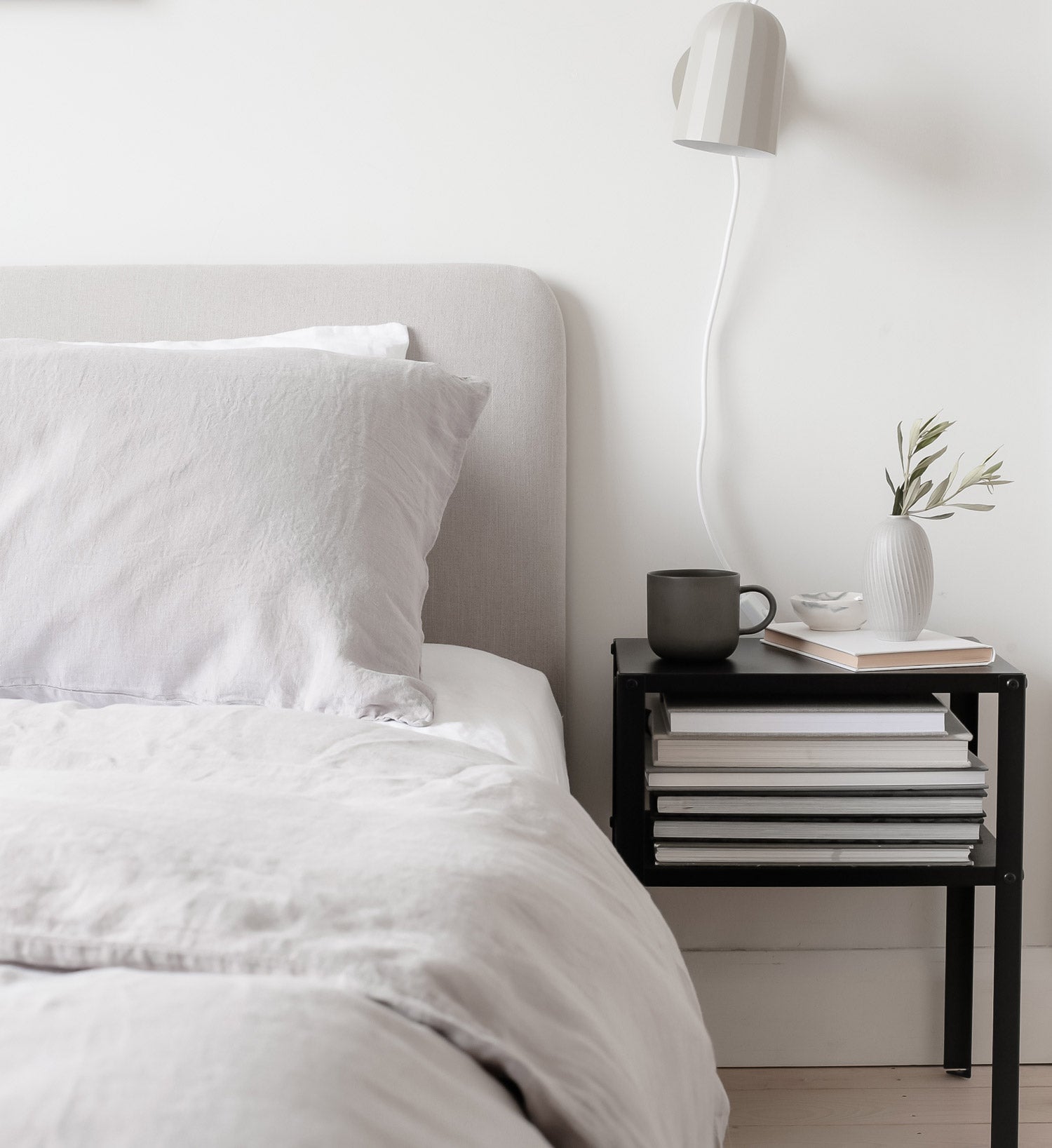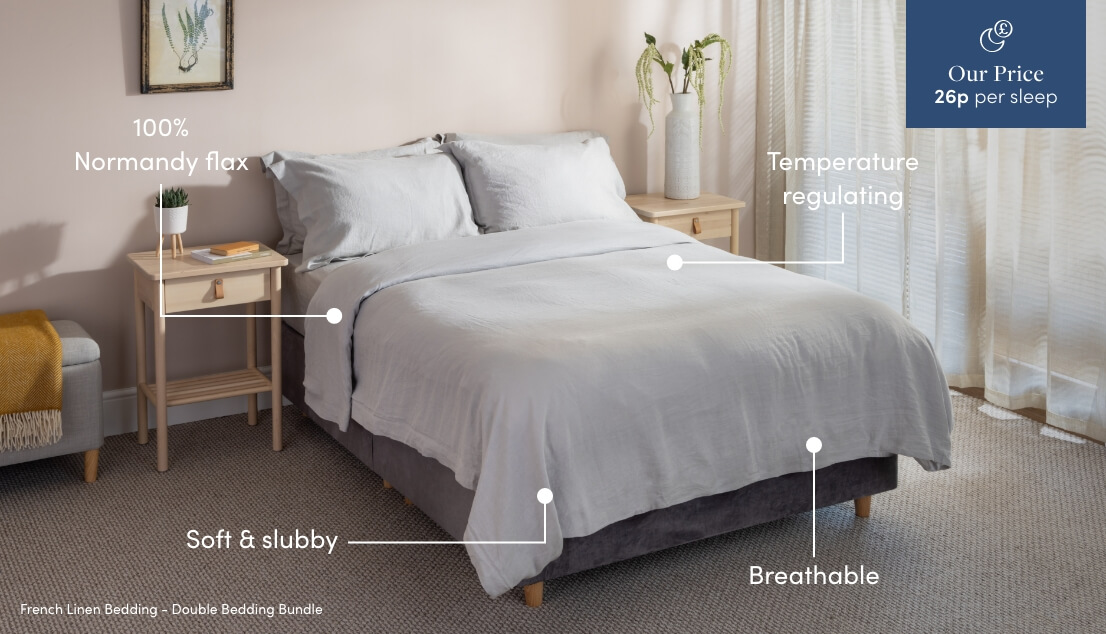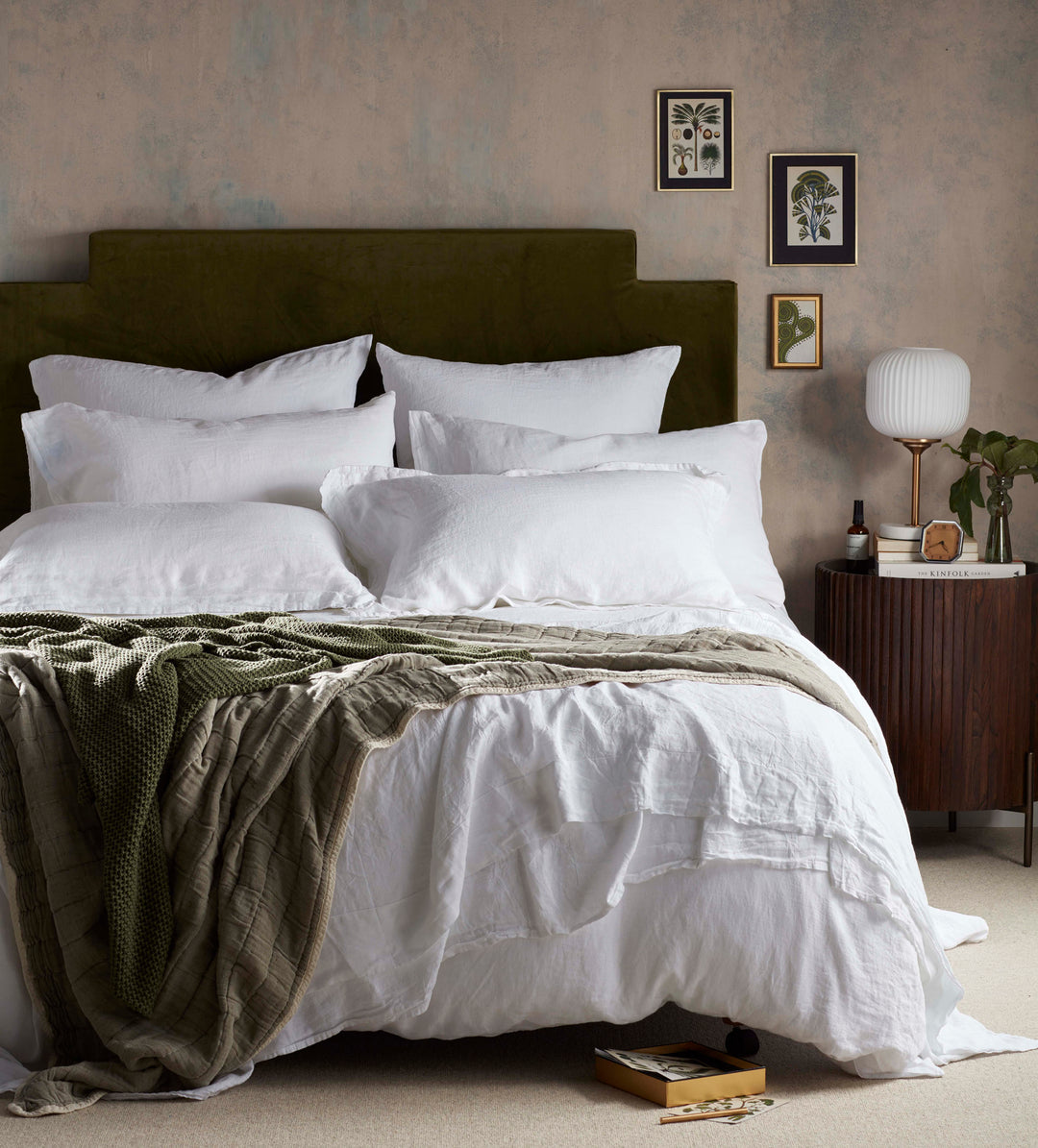Recognizing Linen: The Eco-Friendly Alternative for Comfy Living
When you consider environment-friendly materials, bed linen often stands out for its unique qualities. This all-natural fabric, made from the flax plant, provides both convenience and sustainability. Its remarkable residential or commercial properties make it a perfect option for cozy weather and durable use. What genuinely establishes bed linen apart from various other materials? Understanding its benefits and beginnings can transform just how you view home textiles. Allow's explore the fascinating globe of linen even more.
The Beginnings of Bed Linen: From Flax to Textile

Bed linen, among the earliest fabrics understood to humanity, has a fascinating trip that begins with the humble flax plant. You may be stunned to learn that this plant grows in great environments, flourishing in areas like Europe and parts of Asia. As soon as gathered, the flax stalks go through a procedure called retting, where they're soaked to divide the fibers from the woody components. After retting, the fibers are combed and rotated right into thread, prepared for weaving.
When you see bed linen fabric, you're observing centuries of craftsmanship. The weaving procedure transforms those spools of thread right into the lovely, durable fabric you love. Bed linen has been treasured for its all-natural look, making it a favorite for everything from clothes to home fabrics. Following time you touch linen, remember its abundant history that attaches you to ancient cultures and their standard practices.
The One-of-a-kind Quality of Bed Linen
One of the standout attributes of this exceptional textile is its breathability. When you put on linen, you'll discover how it enables air to distribute, keeping you cool on hot days. This residential property makes it an ideal selection for summer garments and sheets.
Bed linen also boasts exceptional moisture-wicking capacities, drawing sweat away from your skin and allowing it to evaporate quickly. You will not feel clammy, also in damp conditions. Furthermore, bed linen is resilient, frequently becoming softer and more comfy with each clean, which indicates it can stand the test of time in your wardrobe.
An additional unique facet is its all-natural structure; the slight irregularities give linen a character that boosts your style. Plus, it stands up to wrinkles better than numerous other textiles, so you can take pleasure in a relaxed yet brightened appearance without much effort. Accept bed linen, and you'll appreciate its convenience and special beauty.
Ecological Advantages of Linen
When you select linen, you're not just selecting an attractive material; you're likewise supporting sustainable manufacturing practices. Linen's eco-friendly and compostable nature makes it a wise choice for the setting. Plus, it needs significantly much less water to produce compared to other fabrics, helping save this priceless source.
Lasting Production Practices
Although several textiles have substantial ecological impacts, linen attracts attention due to its lasting manufacturing techniques. When you pick bed linen, you're choosing a fabric made from the flax plant, which calls for minimal water and chemicals. This durable crop can flourish in poor soil conditions, reducing the need for chemical fertilizers. Furthermore, the entire flax plant is made use of in manufacturing, reducing waste and promoting source performance.
Bed linen production is often less energy-intensive contrasted to other textiles, as it includes all-natural procedures instead of synthetic therapies. By supporting linen, you're adding to a much more sustainable fabric market that prioritizes eco-friendly techniques. Selecting linen not just enhances your convenience however additionally straightens your worths with environmental duty.
Compostable and naturally degradable Material
Linen's environment-friendly nature extends past its sustainable production; it's compostable and also biodegradable, making it a superb option for eco mindful consumers. When you select bed linen products, you're deciding for materials that damage down naturally, returning nutrients to the earth. Composting linen can improve dirt, advertising healthy and balanced plant growth.
Low Water Intake
One of the standout benefits of linen is its low water consumption throughout growing. Unlike cotton, which requires substantial watering, linen's flax plant thrives on very little water, making it a much more sustainable choice. You'll value understanding that for every single heap of linen produced, considerably less water is required compared to many various other textiles. This indicates that picking bed linen helps preserve vital freshwater sources, which is imperative in today's climate. In addition, bed linen's natural drought resistance enables it to grow in less-than-ideal problems, even more lowering its ecological impact. By opting for bed linen, you're not simply buying quality; you're likewise supporting a fabric that advertises accountable water use and adds to a healthier earth for future generations.
Bed linen vs. Other Fabrics: A Contrast
When you compare linen to various other materials, you'll discover its remarkable breathability and convenience, making it perfect for warm weather condition. And also, linen stands apart for its sturdiness and longevity, typically outliving lots of typically utilized materials. As you consider your options, the ecological impact of each textile will certainly also play an important function in your choice.
Breathability and Comfort
Bed linen stands out among materials for its exceptional capacity to allow air circulation. Unlike synthetic materials, which can trap warm and moisture, bed linen's natural fibers wick away sweat, maintaining you great and completely dry.
Cotton is frequently applauded for its gentleness, however it does not match linen's breathability. Also blends Linenshed may not offer the very same ventilation. If you focus on convenience, particularly in summer season, linen ought to be your best choice. It not just maintains you really feeling fresh yet additionally brings an ageless elegance to your closet.
Longevity and Longevity
While numerous textiles provide varying levels of longevity, linen absolutely stands out in durability, making it a smart investment for your closet. Unlike cotton or artificial products that might put on out rapidly, linen gets stronger with each wash. You'll discover that bed linen's breathable nature likewise lowers wear from sweat and moisture, which can harm other fabrics.
Environmental Impact Contrast
Although numerous materials add to environmental concerns, linen sticks out for its environment-friendly high qualities. Unlike cotton, which requires massive water sources and pesticides, bed linen is made from flax, a plant that grows on minimal water and needs fewer chemicals. This indicates you can really feel good regarding your choice while reducing your carbon footprint.
When contrasted to artificial textiles like polyester, linen's biodegradability beams. While polyester can take hundreds of years to break down, linen breaks down naturally, returning nutrients to the soil.
Selecting bed linen not only advertises lasting farming methods however likewise supports a healthier planet. By selecting bed linen over traditional textiles, you're making a conscious decision that profits both your convenience and the environment.
Taking care of Your Bed Linen Textiles
To guarantee your linen textiles remain in wonderful condition, you'll desire to adhere to some simple care guidelines. Clean your linen in cool water on a gentle cycle to prevent it from shrinking or shedding its shape.
When it comes to drying, air drying is best. If you make use of a dryer, choose a reduced warmth setup and remove the items while they're still a little damp to minimize wrinkles. Iron the linen while it's still damp for less complicated handling, or steam it to keep it looking crisp.
For storage, maintain your bed linen in a cool, completely dry place. Avoid straight sunlight to avoid fading. With these simple practices, your bed linen textiles will preserve their elegance and last for many years, making them a sustainable addition to your way of living.
Integrating Bed Linen Into Your Home Design
Taking care of your bed linen textiles not only maintains their high quality but likewise opens up a globe of possibilities for incorporating them right into your home style. You can begin small by including linen toss pillows to your sofa, instantaneously elevating the space with structure and heat. Think about bed linen drapes that filter sunshine magnificently, producing a soft, airy atmosphere in any kind of space.
For a much more rustic look, attempt using bed linen tablecloths or runners during meals; they add a stylish touch and are very easy to tidy. If you're really feeling adventurous, mix and match various bed linen colors and patterns to develop an one-of-a-kind, layered effect.
Do not forget linen coverings-- drape one over a chair or your bed for a welcoming feeling. By thoughtfully integrating linen right into your decoration, you enhance both convenience and style, making your home a tranquil hideaway.
The Future of Linen in Lasting Living
As consumers increasingly focus on sustainability, linen emerges as a frontrunner in environment-friendly fabrics. Its manufacturing makes use of less water and pesticides compared to conventional cotton, making it a much more eco accountable choice. As you look in the direction of a sustainable future, integrating linen right into your wardrobe and home can substantially lower your carbon footprint.
Ingenious brands are now focusing on lasting methods, from using natural flax to applying circular economic climate concepts. You'll discover that bed linen's toughness suggests it lasts longer, reducing the demand for constant replacements.
In addition, as even more individuals embrace minimal lifestyles, linen's timeless appeal and flexibility will maintain it relevant. By picking bed linen, you're not simply selecting convenience; you're also supporting sustainable techniques.
In the upcoming years, the demand for bed linen is anticipated to grow, solidifying its area in a much more eco-conscious world. So, think about making linen a staple in your lasting living trip.
Regularly Asked Concerns
Is Bed Linen Appropriate for Individuals With Allergic Reactions?
Yes, bed linen's all-natural fibers are hypoallergenic, making it appropriate for individuals with allergies. Its breathable nature assists minimize moisture and microorganisms accumulation, contributing to a healthier resting setting. You'll likely locate it comfortable and safe.
Can Linen Be Colored Easily?
Yes, you can dye bed linen quickly. Its all-natural fibers take in dyes well, enabling vibrant colors. Simply make sure you use the ideal color type and follow proper strategies to achieve the wanted results without damaging the textile.
Just How Does Bed Linen Compare in Sturdiness to Cotton?

What Weight of Bed Linen Is Best for Summer Clothing?
For summertime clothing, light-weight linen around 4 to 5 ounces per backyard is perfect. It maintains you great, breathable, and comfortable in heat (Linenshed). You'll appreciate exactly how it drapes and actions with you easily

Can Linen Be Used for Outdoor Furnishings?
Yes, you can use linen for exterior furniture. It's breathable and long lasting, making it a great option for cozy weather. Just make certain to choose a treated version to endure the components and keep its appearance.
Verdict
Including bed linen into your life not just improves your convenience yet also supports an extra lasting future. By picking this green material, you're making a mindful choice that profits both your health and the world. With its distinct buildings and very little ecological effect, linen is a wise option for your home design and lifestyle. Welcome bed linen, and appreciate the ideal mix of design, resilience, and sustainability in your day-to-day living.
Bed linen's compostable and eco-friendly nature makes it a clever selection for the environment. By including bed linen into your home, you're not just appreciating its comfort and resilience; you're also aiding and supporting green practices produce a much healthier world. The Future of Linen in Lasting Living.
